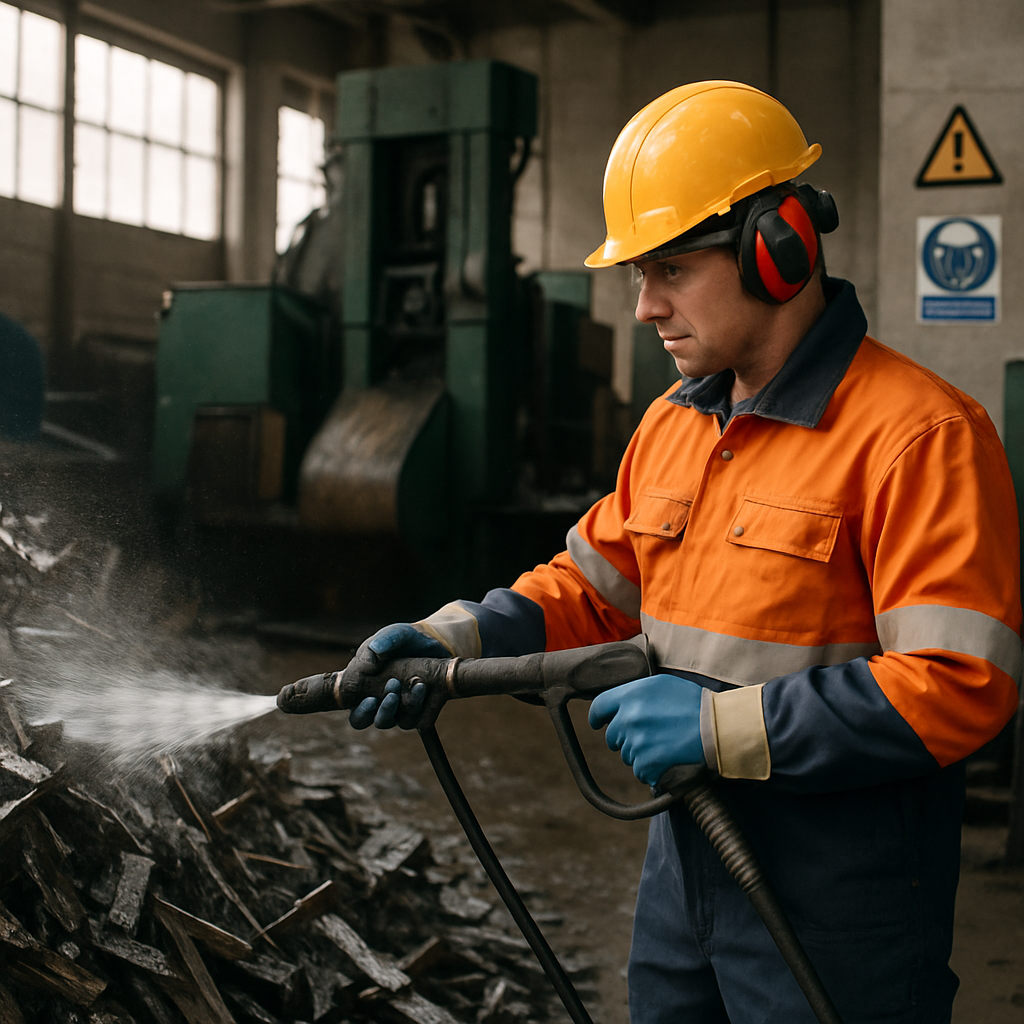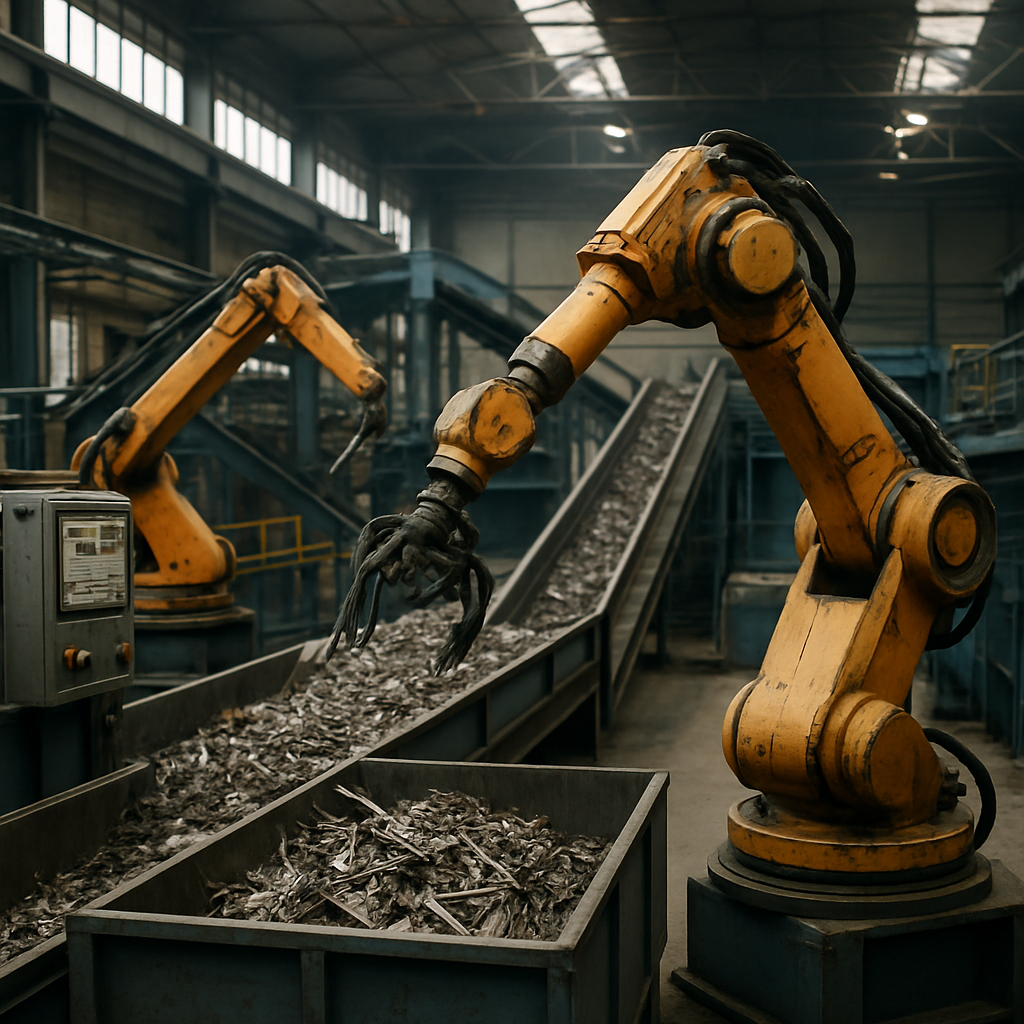5901 Botham Jean Blvd, Dallas, TX 75215
Scrap Metal Cleaning Process: Everything You Need to Know
October 7, 2025The scrap metal cleaning process plays a crucial role in metal recycling by eliminating contaminants from collected materials. These contaminants, such as dirt, oil, paint, coatings, and other foreign substances, can compromise the quality of recycled metal.
Cleaning acts as a link between collection and processing in recycling. Without proper cleaning, impurities can affect the melting process, resulting in lower-quality recycled products. This preparation step ensures that metals retain their valuable properties throughout recycling.
When scrap yards receive metal from construction sites, industrial facilities, or residential collections, the materials often arrive with varying levels of contamination. The cleaning process transforms this raw scrap into a more valuable commodity, ready for further processing. As environmental standards become stricter, thorough cleaning has become essential for meeting quality requirements in the metal recycling industry.
What Are the Key Steps in Scrap Metal Cleaning?

The scrap metal cleaning process involves several important steps, each essential for transforming discarded metal into reusable materials. This systematic approach ensures metals are correctly sorted, processed, and purified for recycling.
Collection and Initial Sorting
The first step in scrap metal cleaning is collecting and sorting the materials. This sorting process is fundamental to the entire recycling operation.
- Ferrous metals (containing iron) are separated from non-ferrous metals using powerful magnets
- Non-ferrous metals like copper, aluminum, and brass require manual sorting or specialized equipment
- Visual inspection helps identify different metal types based on color, weight, and appearance
Modern recycling facilities often use advanced sorting technologies to streamline this process. These automated systems can rapidly categorize different metal types with minimal human intervention.
Processing and Size Reduction
Once sorted, scrap metal undergoes processing to make it more manageable for cleaning and melting.
- Shredding machines break down large metal pieces into smaller fragments
- Metal is crushed or compacted to reduce volume and increase density
- Size reduction makes subsequent cleaning and melting more energy-efficient
This processing step transforms bulky metal items into uniform pieces that can be handled more effectively during the cleaning phase.
Cleaning and Contaminant Removal
Proper cleaning removes non-metal components and contaminants that would compromise quality.
- Physical cleaning removes dirt, paint, and coatings from metal surfaces
- Chemical baths dissolve persistent contaminants without damaging the metal
- Thermal cleaning uses heat to burn off organic materials like plastic or rubber
Clean metal is crucial for producing high-quality recycled materials. Any remaining impurities can significantly affect the properties of the final product.
Melting and Purification
The final cleaning stages involve melting and purifying the metal to eliminate any remaining impurities.
- Different metals require specific furnace types and temperatures for melting
- Electrolysis separates pure metal from impurities using electric currents
- Chemical purification processes remove specific contaminants based on metal type
During melting, technicians can analyze the metal composition and make adjustments to meet specific quality standards.
Solidification and Quality Control
After purification, the metal is cooled and formed into standardized shapes for reuse.
- Molten metal is poured into molds to create ingots, bars, or sheets
- The cooling process is carefully controlled to maintain desired properties
- Quality testing ensures the recycled metal meets industry standards
These final steps transform cleaned scrap metal into valuable resources ready for manufacturing new products.
The scrap metal cleaning process demonstrates how systematic approaches to waste management can transform discarded materials into valuable resources. Each step in the process plays a vital role in ensuring that recycled metals maintain the quality necessary for reuse in manufacturing and construction.
How Does Cleaning Impact Metal Recycling Efficiency?
Proper cleaning of scrap metal is essential for recycling efficiency. Contaminants like dirt, grease, rust, plastic, and rubber significantly reduce the recyclability and value of metal materials. Thoroughly cleaned metals melt more easily and require substantially less energy during processing.
Removing non-metal attachments is a crucial initial step in the cleaning process. This involves disassembling items to separate plastic handles from tools, rubber insulation from wires, and other non-metal components that would otherwise contaminate the melt. A wire brush or cloth can be used to remove dirt, grease, and other surface debris. For ferrous metals, removing rust with sandpaper or specialized solutions can improve value and processing quality.
Clean scrap metal delivers multiple efficiency benefits throughout recycling. Metal free from contaminants melts at lower temperatures, reducing energy consumption by up to 95% for aluminum and 60% for steel compared to producing these materials from raw resources. These energy savings directly translate to reduced carbon emissions, supporting climate action goals while lowering operational costs.
The purity of input materials directly affects the quality of recycled metal outputs. Contaminated scrap produces inferior recycled materials with compromised structural properties and appearance. In contrast, properly cleaned metal results in higher-grade recycled products that meet strict manufacturing specifications. This quality difference significantly impacts market value, with clean, sorted metals commanding premium prices in recycling markets.
Meticulous cleaning also improves operational efficiency at recycling facilities. Processing clean scrap reduces equipment wear and maintenance requirements while minimizing production delays. Recycling plants can process clean materials more quickly, increasing throughput and overall facility productivity, contributing to the economic viability of metal recycling programs.
Investing time in proper cleaning yields tangible financial returns. Customers who thoroughly clean their scrap receive significantly higher payouts from recycling facilities. The increased value comes from both the accurate weight measurement of the actual metal (without contaminant weight) and the higher quality of the material. For businesses generating substantial scrap volumes, this value difference can represent thousands of dollars annually.
Environmental and Economic Impact of Clean Metal Recycling
The environmental benefits of clean metal recycling extend beyond energy savings. Recycling one ton of steel conserves approximately 2,500 pounds of iron ore, 1,400 pounds of coal, and 120 pounds of limestone. These resource savings reduce the environmental impact of mining operations, including land disruption, water usage, and habitat destruction.
Clean metal recycling also significantly reduces landfill usage. As available landfill space becomes increasingly limited and expensive, diverting metal waste through efficient recycling preserves land resources and prevents potential soil and groundwater contamination from discarded metals.
For manufacturers receiving recycled materials, clean input stock improves production efficiency. Materials with minimal contaminants require less additional processing, reduce defect rates, and support consistent quality in finished products. This reliability makes recycled metals more attractive to manufacturers, strengthening market demand.
The financial impact of proper cleaning extends throughout the recycling value chain. Recycling facilities can operate more efficiently with clean materials, reducing processing costs while producing higher-value outputs. These operational improvements support competitive pricing for scrap materials, benefiting both suppliers and processors.
Proper cleaning efficiency also makes metal recycling economically viable at smaller scales. When processing requires less energy and produces less waste, recycling operations can be profitable even with lower volume streams. This accessibility expands recycling opportunities across diverse business settings, from small machine shops to large manufacturing facilities.
By prioritizing thorough cleaning in scrap metal preparation, businesses contribute to a more sustainable, efficient recycling system. This simple step yields cascading benefits throughout the recycling process, from energy savings and reduced emissions to improved product quality and higher market values. Clean metal recycling represents one of the most impactful sustainability practices available to manufacturing operations.
What Technologies Are Used in Modern Scrap Metal Cleaning?

Modern scrap metal cleaning has evolved dramatically through technological innovation. Today’s facilities use sophisticated equipment that significantly improves efficiency, accuracy, and environmental performance compared to traditional manual methods.
Automated Sorting Systems
Automated sorting systems represent a fundamental advancement in scrap metal cleaning. These systems utilize sensors, robotics, and artificial intelligence to identify and separate different types of metals with remarkable precision.
Magnetic separators effectively extract ferrous metals from mixed waste streams by using powerful magnets to attract iron-containing materials. This technology ensures that steel and iron are properly segregated for appropriate cleaning treatments.
For non-ferrous metals like aluminum and copper, facilities employ eddy current separators. These machines create magnetic fields that induce electrical currents in non-ferrous metals, causing them to be repelled from other materials. This technology has dramatically improved recovery rates for valuable metals.
Advanced Identification Technologies
X-ray fluorescence (XRF) analyzers have transformed metal identification in the recycling industry. XRF technology bombards metal with X-rays, causing it to emit energy at wavelengths specific to its elemental composition. Recyclers can instantly determine a metal’s exact makeup, ensuring it receives the appropriate cleaning process.
Optical emission spectrometry (OES) offers another precise method for metal analysis. This technology creates a high-energy spark on the metal surface, vaporizing a tiny sample. The spectrum of light emitted during this process reveals the metal’s precise chemical composition. OES is particularly valuable for identifying alloys that require specialized cleaning approaches.
Laser-induced breakdown spectroscopy (LIBS) provides real-time, in-line analysis of metal composition. By directing a high-powered laser pulse at metal surfaces, LIBS creates plasma that emits characteristic light. This technology enables rapid identification even during high-volume processing.
Processing Equipment
High-efficiency shredders break down large metal objects into smaller fragments. Modern shredders feature advanced designs that maximize throughput while minimizing energy consumption. Some utilize cryogenic cooling systems that make metals more brittle, facilitating easier fragmentation and separation.
Specialized furnaces with precise temperature controls ensure optimal melting conditions for different metal types. These furnaces often incorporate waste heat recovery systems that capture and reuse thermal energy, significantly reducing overall energy consumption.
Hydrometallurgical processing represents an innovative approach for certain applications. This technique uses aqueous solutions to extract and recover valuable metals. The process is particularly effective for electronic waste containing precious metals and creates fewer emissions than traditional high-temperature smelting.
Data Integration Systems
The Internet of Things (IoT) has transformed scrap metal cleaning through real-time monitoring and analytics. IoT-enabled sensors throughout the facility track equipment performance, detect anomalies, and provide instant data on cleaning processes. This connectivity allows operators to optimize operations and reduce downtime.
Process optimization software analyzes data from various stages of the cleaning process to identify inefficiencies. These sophisticated programs suggest improvements that maximize throughput and quality while minimizing operational costs. The result is cleaner metal with lower resource consumption.
Conclusion: The Future of Scrap Metal Cleaning
Scrap metal cleaning technologies are leading advancements in recycling. These processes are evolving rapidly to meet the increasing global demand for recycled metals in manufacturing and construction. Advanced AI-powered sorting systems, improved chemical cleaning methods, and sophisticated mechanical separation techniques now recover valuable materials with exceptional precision and efficiency. This technological progress makes recycling more economically viable while significantly reducing its environmental impact.
The future of scrap metal cleaning lies in automation and sustainable practices. Smart sensors, robotics, and machine learning algorithms are transforming traditional recycling facilities into high-tech operations capable of processing complex materials with minimal human intervention. These innovations not only enhance worker safety but also improve material recovery rates, fostering a more robust circular economy where metals retain their value through multiple lifecycles. For businesses looking to recycle their scrap metals, contact Okon Recycling at 214-717-4083.
